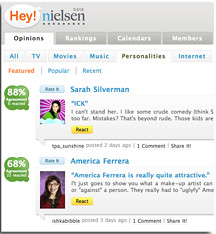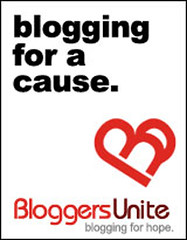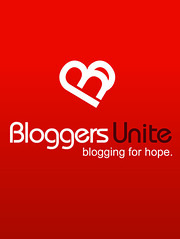When I wrote about how I broke into journalism, Lewis Green suggested the bigger lesson was never missing an opportunity to start up a conversation.
He’s right. One perfect example is my good friend James Hoke. He recently became one of the executive producers behind the Hilary Duff and Steve Coogan movie Safety Glass, which is due to be released in 2008. How recently? The movie’s financing received a green light, just before we went to a late lunch today.
Safety Glass, yet to be revealed on IMDB, is about a New York reporter sent to cover a hometown Challenger Space Shuttle hero, but then finds another story when he follows a group of students whose teacher commits suicide. While covering the new story, the reporter is drawn in by this group of confused and combustible students, becoming their "substitute" hero and willing participant in their twisted universe.
Hoke, who is also president of Las Vegas-based Destination Marketing Group, broke into becoming one of the five partners in the new production company Five Kings Pictures, LLC because he didn’t miss his opportunity to start a conversation. The conversation began more than a year ago when he was promoting Matsuri, the number one stage production in Japan, while it performed a limited engagement in Las Vegas (a promotion we were fortunate to work on with him).
It was during Hoke’s promotion of Matsuri that he started a conversation with Joe Nahas. While working together on a couple of projects that are still under wraps and in development, Nahas called Hoke one day and asked him a life-changing question.
“Do you want to start a production company and make a movie?”
“’Yeah, sure,’ I told him. ‘Let’s do it,” Hoke said. “What’s to think about? All my life I’ve wanted to make movies. So I called my friend Anthony Miranda and the three of us founded Three Kings Production.”
Three Kings Production then teamed with two more people — Nick Nahas and Elie Samaha — to form Five Kings Pictures. Samaha most recently produced Rescue Dawn with Zach Grenier, Marshall Bell, and Christian Bale. He is best known for producing The Boondock Saints, The Whole Nine Yards, and City By The Sea (along with scores of others).
“You’ve heard about napkin deals in Hollywood?” asked Hoke. “Here’s one … right here.”
Tacked to his office wall, the entire production budget for Safety Glass is sketched on a single piece of yellow notebook paper by Samaha. The edges are worn, small tears along the top and bottom, but the handwriting — written with a black Sharpie marker — was everything needed to produce the film. It is also a representation of the chain of events that started with one conversation.
“It’s unbelievable. I’m one of the executive producers of Safety Glass, written by Jonathan Kyle Glatzer and Robert Lawson,” says Hoke. “We’re producing in Canada with Nasser Group North and Montage Films. I’ve worked for this my whole life.”
I saw it for myself. Laid out in analytically organized piles across his floor, it was the makings of a movie. Three different companies tucked inside neatly labeled binders on the shelf, with more to be added in the days ahead. Phone calls and e-mails waiting to be answered.
Amazing. Even more so when after lunch, I sat in with Hoke as he made numerous calls to set the next step in motion in between celebratory cheers as the news rolled across the country. Safety Glass was moving forward.
“I’ve worked on dozens of movie soundtracks,” said one of Hoke's partners, Miranda, during one of several calls placed after lunch. “This moves it to a different level. It’s the right movie with the right script and the right people at the right time.”
A new level indeed. Hoke has three additional movies that they are working on to ensure Safety Glass is only the beginning of Five Kings Pictures. The others, of course, will be balanced against his schedule, commuting between Las Vegas and Canada.
Even more remarkable, all of it can be traced back to a single conversation. And all of it will create more conversations in days, and weeks, and months to come.
In fact, I’ll be interviewing Miranda for another reason soon. He’s likely to appear on David Letterman in the next few months because of a single YouTube video. But that’s a conversation for another time.
Dreams and conversations. You never know where they might lead.

He’s right. One perfect example is my good friend James Hoke. He recently became one of the executive producers behind the Hilary Duff and Steve Coogan movie Safety Glass, which is due to be released in 2008. How recently? The movie’s financing received a green light, just before we went to a late lunch today.
Safety Glass, yet to be revealed on IMDB, is about a New York reporter sent to cover a hometown Challenger Space Shuttle hero, but then finds another story when he follows a group of students whose teacher commits suicide. While covering the new story, the reporter is drawn in by this group of confused and combustible students, becoming their "substitute" hero and willing participant in their twisted universe.
Hoke, who is also president of Las Vegas-based Destination Marketing Group, broke into becoming one of the five partners in the new production company Five Kings Pictures, LLC because he didn’t miss his opportunity to start a conversation. The conversation began more than a year ago when he was promoting Matsuri, the number one stage production in Japan, while it performed a limited engagement in Las Vegas (a promotion we were fortunate to work on with him).
It was during Hoke’s promotion of Matsuri that he started a conversation with Joe Nahas. While working together on a couple of projects that are still under wraps and in development, Nahas called Hoke one day and asked him a life-changing question.
“Do you want to start a production company and make a movie?”
“’Yeah, sure,’ I told him. ‘Let’s do it,” Hoke said. “What’s to think about? All my life I’ve wanted to make movies. So I called my friend Anthony Miranda and the three of us founded Three Kings Production.”
Three Kings Production then teamed with two more people — Nick Nahas and Elie Samaha — to form Five Kings Pictures. Samaha most recently produced Rescue Dawn with Zach Grenier, Marshall Bell, and Christian Bale. He is best known for producing The Boondock Saints, The Whole Nine Yards, and City By The Sea (along with scores of others).
“You’ve heard about napkin deals in Hollywood?” asked Hoke. “Here’s one … right here.”
Tacked to his office wall, the entire production budget for Safety Glass is sketched on a single piece of yellow notebook paper by Samaha. The edges are worn, small tears along the top and bottom, but the handwriting — written with a black Sharpie marker — was everything needed to produce the film. It is also a representation of the chain of events that started with one conversation.
“It’s unbelievable. I’m one of the executive producers of Safety Glass, written by Jonathan Kyle Glatzer and Robert Lawson,” says Hoke. “We’re producing in Canada with Nasser Group North and Montage Films. I’ve worked for this my whole life.”
I saw it for myself. Laid out in analytically organized piles across his floor, it was the makings of a movie. Three different companies tucked inside neatly labeled binders on the shelf, with more to be added in the days ahead. Phone calls and e-mails waiting to be answered.
Amazing. Even more so when after lunch, I sat in with Hoke as he made numerous calls to set the next step in motion in between celebratory cheers as the news rolled across the country. Safety Glass was moving forward.
“I’ve worked on dozens of movie soundtracks,” said one of Hoke's partners, Miranda, during one of several calls placed after lunch. “This moves it to a different level. It’s the right movie with the right script and the right people at the right time.”
A new level indeed. Hoke has three additional movies that they are working on to ensure Safety Glass is only the beginning of Five Kings Pictures. The others, of course, will be balanced against his schedule, commuting between Las Vegas and Canada.
Even more remarkable, all of it can be traced back to a single conversation. And all of it will create more conversations in days, and weeks, and months to come.
In fact, I’ll be interviewing Miranda for another reason soon. He’s likely to appear on David Letterman in the next few months because of a single YouTube video. But that’s a conversation for another time.
Dreams and conversations. You never know where they might lead.































